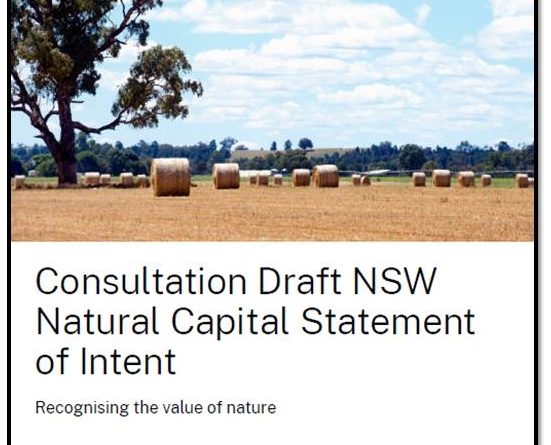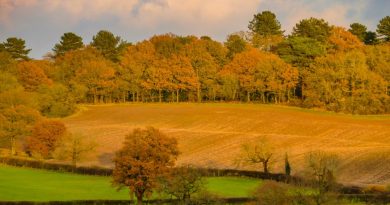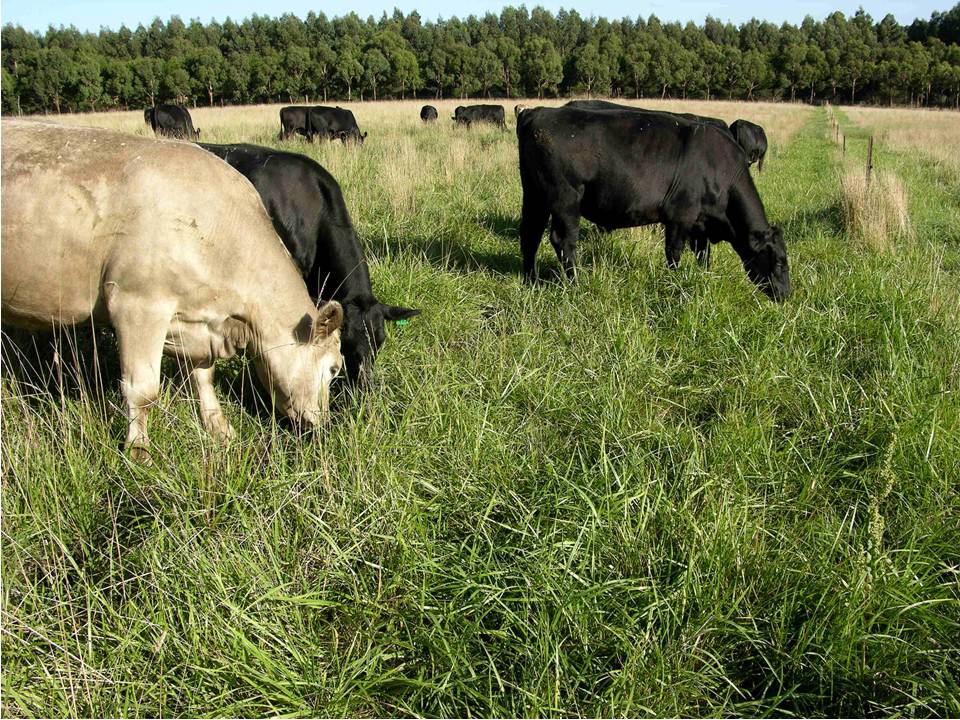Farms natural capital importance recognised by NSW government
By Patrick Francis
Recognition for improving natural capital on farms has been given a significant boost in New South Wales with the state government releasing its “Draft Natural Capital Statement of Intent – recognising the value of nature” report in May 2022.
The report highlights that natural capital can be improved with active land stewardship alongside productive cropping and grazing. But like many programs and policies the NSW government contends it is the key player in achieving natural capital improvement, when it is up to farmers to implement practices that produce the outcomes needed.
Government’s role is providing support.
• developing cost effective ways to measure and account for natural capital
•developing new approaches to optimise natural capital within productive landscapes
• understanding the linkages, inter-dependencies and trade-offs between different natural capital assets
• protecting our natural capital from biosecurity risks
• identifying ways to build natural capital while building social and economic outcomes at the same time
• developing approaches that ensure we build resilience into our natural capital assets to adapt to a changing climate.
As these developments are achieved the NSW government is anticipating that new natural capital industries develop across the state.
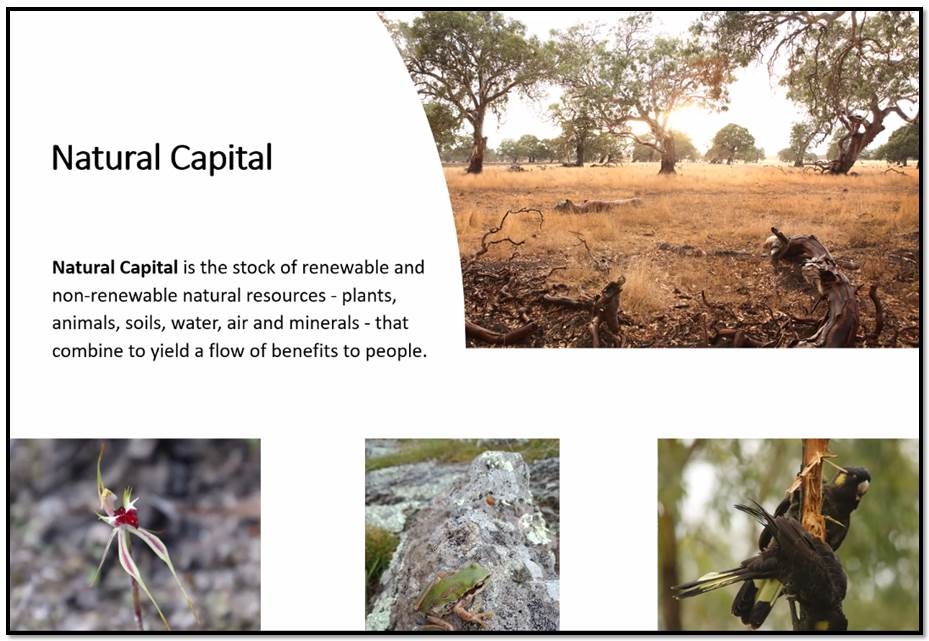
Figure: Definition of Natural Capital. Source: Jim Radford, Research Centre for Future Landscapes, La Trobe University, webinar November 2021
The Report defines natural capital as “the world’s stocks of natural assets, and the services that flow from them, which include geology, soil, air, water and all living things. It is from this natural capital that humans derive a wide range of services, often called ecosystem services, which make human life possible. … Natural capital is a way of thinking about nature in much the same way as traditional capital – if we invest in it, it creates value, and if we degrade it, we limit its value.”
“By not valuing the benefits we get from nature and taking nature into account in our economic and financial decisions, we create significant social and economic costs.”
The NSW government states its roll in facilitating natural capital improvement in conjunction with farmers is to:
* incentivise best practice land management and remove red tape and
* co-design cost-effective natural capital mechanisms with stakeholders.
It also recognises that natural capital improvement on farms cannot be undertaken in a vacuum, it must be addressed in conjunction with sustainable development and climate change. Time will tell if these statements are genuine or aspirational when planning residential developments along the coast and around expanding regional towns.
The hint that this Report is “greenwash” or window dressing stems from the list of “opportunities and benefits of recognising the value of nature”. The list includes:
* Increase economic prosperity and climate resilience of regions, towns and cities.
* Attract additional sustainable investment into NSW.
On the other hand it also lists:
* Conserve, restore and enhance the State’s natural environment and productive landscapes for current and future generations.
Is the third point compatible with the first two?
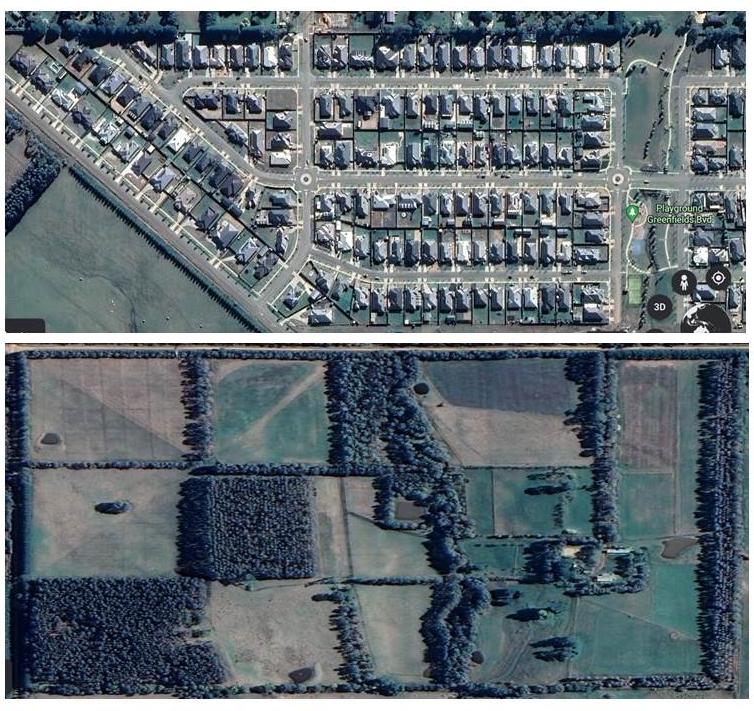
Figure: It can be difficult to believe governments sincerity when they promote natural capital improvement on productive farm land while at the same time allows developers to decimate or remove natural capital on adjacent land. Top: a new housing estate. Bottom: Natural Capital enhancement on productive farm land just 2km south of the development.
The Report puts emphasis on creating value for landholders and farmers out of improving natural capital. It highlights a key vehicle for decision making being the Recognising Natural Capital Program “which brings together stakeholders from the finance, non-government and government sectors to collaborate on ways to unlock the value of natural capital.”
This is proposed to be achieved by “creating the market framework and financial incentives for the primary industries and lands sector to sequester carbon, enhance biodiversity, improve productivity through best practice (farm management) and create other economic opportunities.”
This suggests a top down approach rather than a bottom up way of recognising that best practice land management has co-benefits for productivity and natural capital. It is fraught with dangers associated with red tape, bureaucratic interference, scams and third party costs.
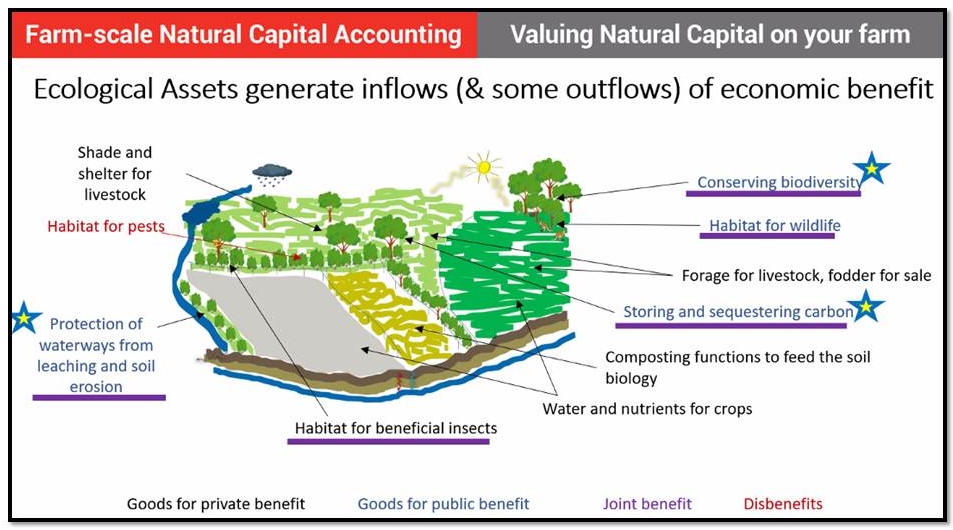
Figure: Natural Capital provides farms with a host of private, public and joint co-benefits. Source: Jim Radford, Research Centre for Future Landscapes, La Trobe University, webinar November 2021
There seems to be no recognition of past best practice impacts on natural capital. The report highlights “Future Focus Areas” as if past practices which have improved natural capital are irrelevant and the government will “support the development of capacity building networks and will unlock natural capital investment opportunities.” What has been done in the past seems to be irrelevant or unrecognisable as landholders need to be helped “to identify new capital investment opportunities and diversity revenue streams.”
It even suggests that past best practice is inadequate stating the government will be “partnering with … landholders to develop fit-for-purpose solutions and incentives that recognise industry-leading nature-positive agriculture practices.”
The underlying thinking is that farmers won’t invest in best practice management that rewards farmers directly through improved productivity and profitability and has co-benefits for natural capital unless additional dollars are made available for the latter. It refers to the establishment or further development of government-led strategies and initiatives such as the Biodiversity Offsets Scheme, Saving our Species program, the Forest Stewardship Program, the Primary Industries Productivity and Abatement Program and government-initiated partnerships with the finance sector to stimulate and accelerate natural capital investment opportunities.
“Initially, government intervention is required to deliver activities and programs”,… Our support of natural capital markets will provide incentives for the primary industries sector ….to conserve and manage the environment to generate broader economic, social and cultural benefits.”
Farmers who have adopted best practice farm management , who have participated in landcare and other catchment management authority programs for the last 10 to 30 years, and seen the co-benefits, are justified in asking why government intervention is required to deliver change? Why can’t the outcomes already achieved and continuing, be recognised for their natural capital improvement?
Finally, the Report ends with the NSW government reaffirming its roll in repositioning the state’s “relationship with nature, for the benefit of both current and future generations”.
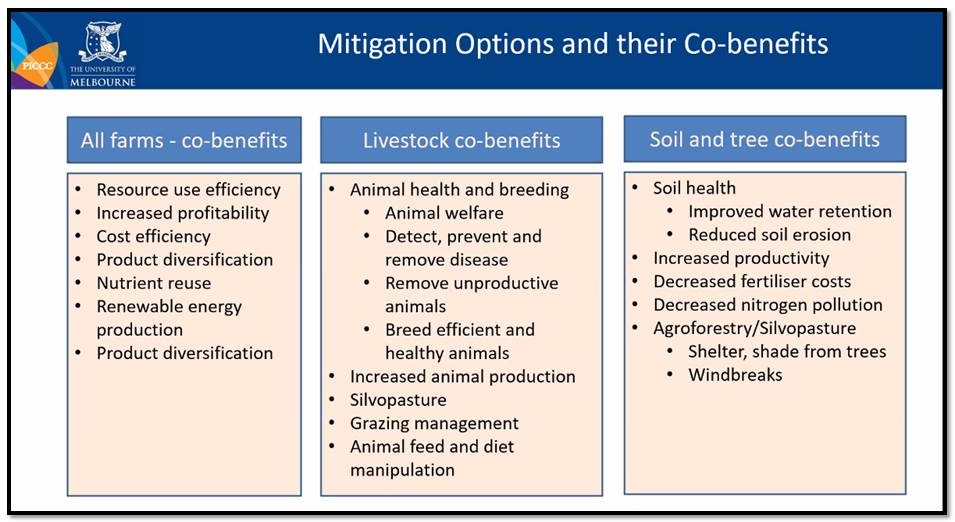
Figure: As farmers build natural capital with initiatives that supply ecosystem services such as greenhouse gas mitigation, a wide range of co-benefits are achieved. Source: Natalie Doran-Brown University of Melbourne, webinar December 2021.

